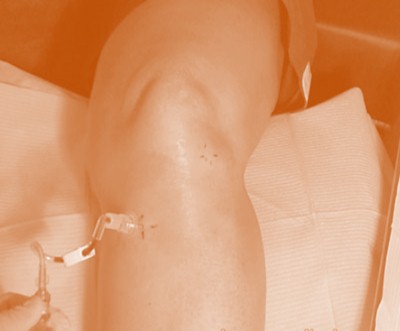Knee Stem Cell Injections: Is Convenience Winning Out Over Science?
There’s a trend in knee stem cell injections where the doctor uses a drill to take bone marrow from just below the knee instead of the iliac crest (back of the hip). The reasons stated for doing this are that this area is convenient to access. In addition, since in this technique the stem cells aren’t concentrated, but just extracted and placed right back in, it’s only one site to prep. A drill is often used to get into this spot, as the bone is very dense and thick here. With the drill and some numbing medicine it’s well tolerated by the patient, but does the science support that this is the right spot to draw bone marrow for knee stem cell injections? Well a recent study calls this draw site into question when compared to the more commonly used iliac crest at the back of the hip. The researchers compared the stem cell content from both sites and found that there were twice as many stem cells per unit volume in the bone marrow extracted from the back of the hip (iliac crest) when compared to the site just under the knee (tibia). Why then is the tibial bone marrow draw site still being used? It’s an easy spot to hit reliably without guidance. The back of the hip site requires significantly more physician skill, training and equipment to use x-ray or ultrasound to guide the needles to the right spot.
The upshot? The question is, should physician convenience take precedence over maximizing the number of stem cells harvested and used in your knee stem cell injections? You decide.

If you have questions or comments about this blog post, please email us at [email protected]
NOTE: This blog post provides general information to help the reader better understand regenerative medicine, musculoskeletal health, and related subjects. All content provided in this blog, website, or any linked materials, including text, graphics, images, patient profiles, outcomes, and information, are not intended and should not be considered or used as a substitute for medical advice, diagnosis, or treatment. Please always consult with a professional and certified healthcare provider to discuss if a treatment is right for you.
